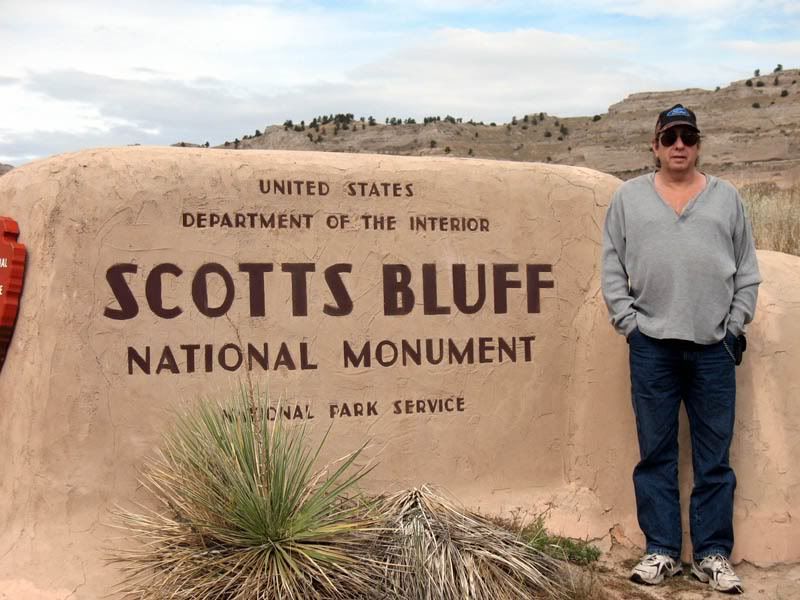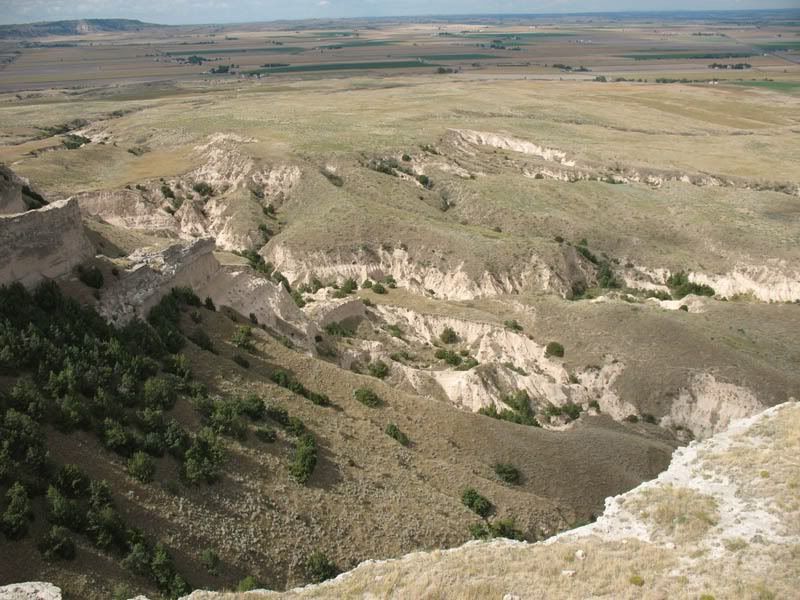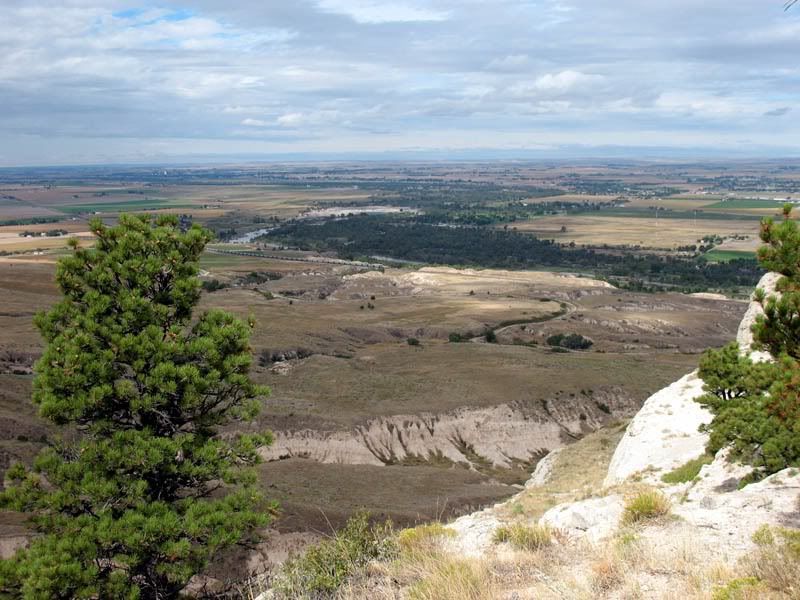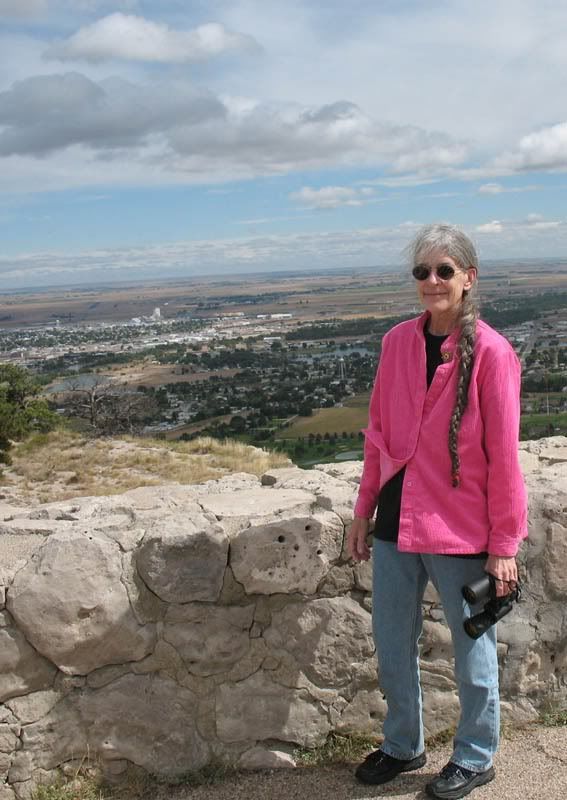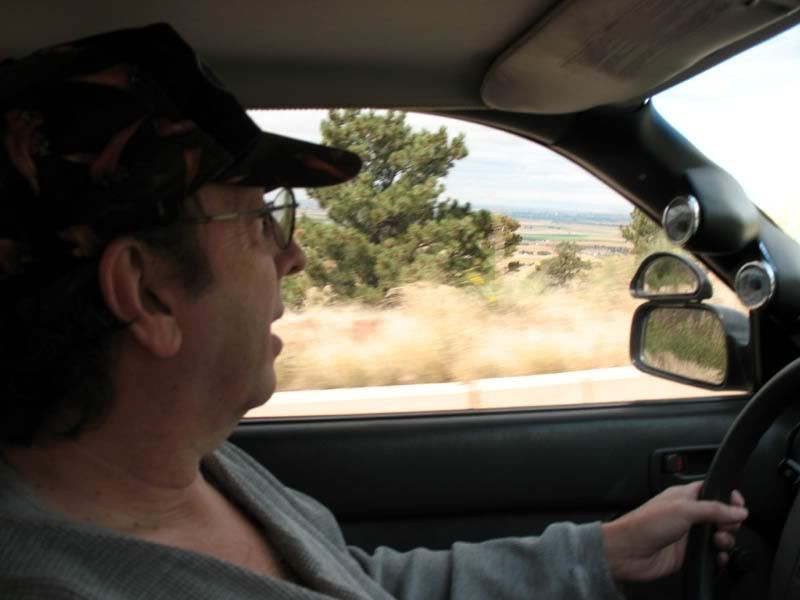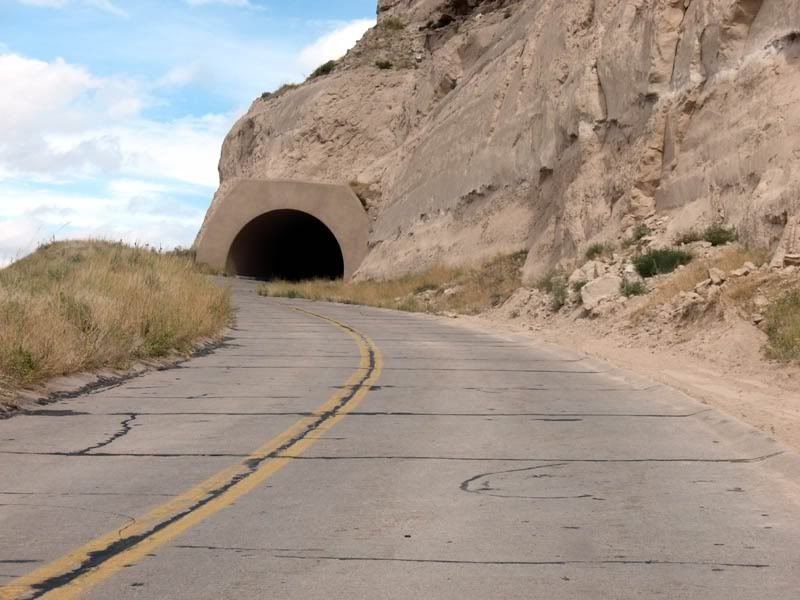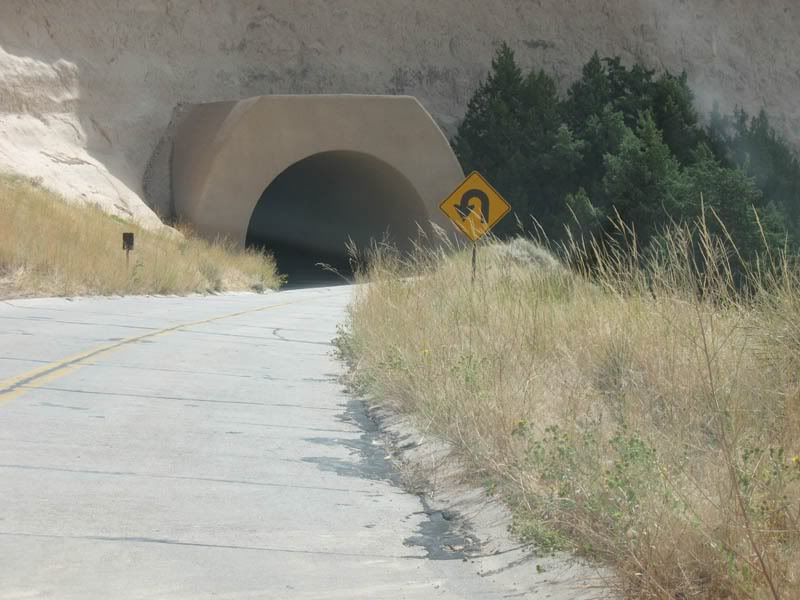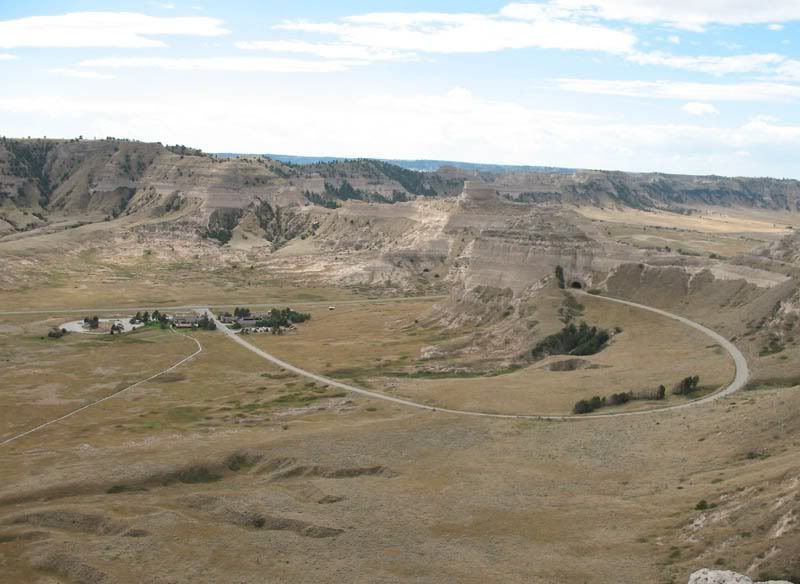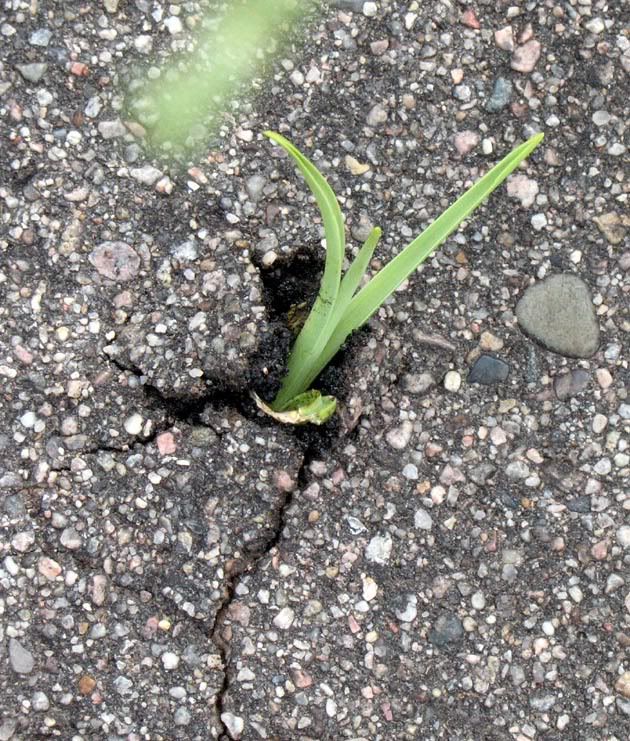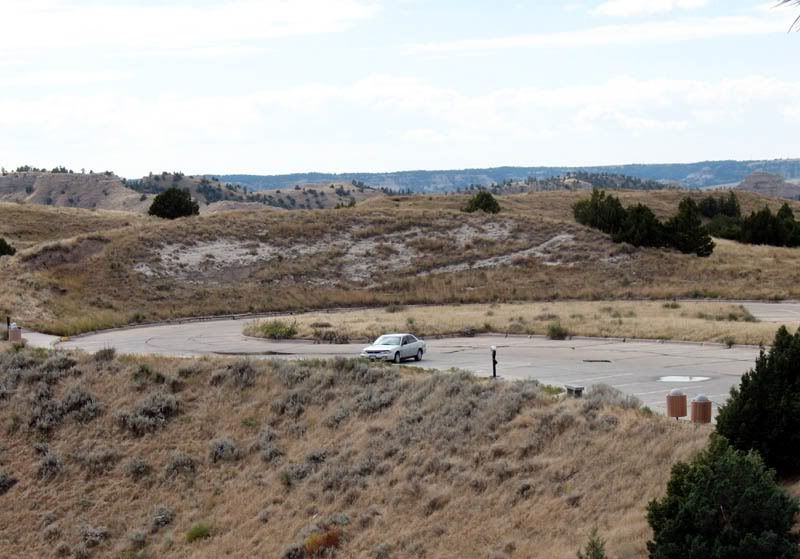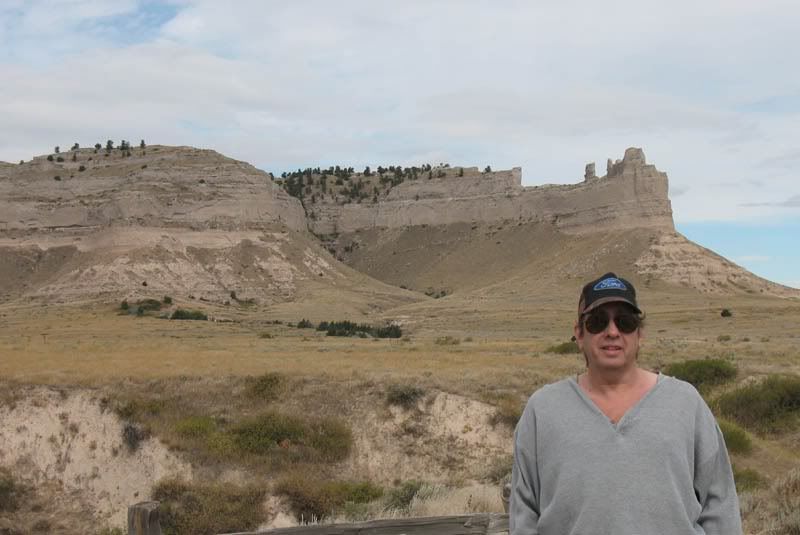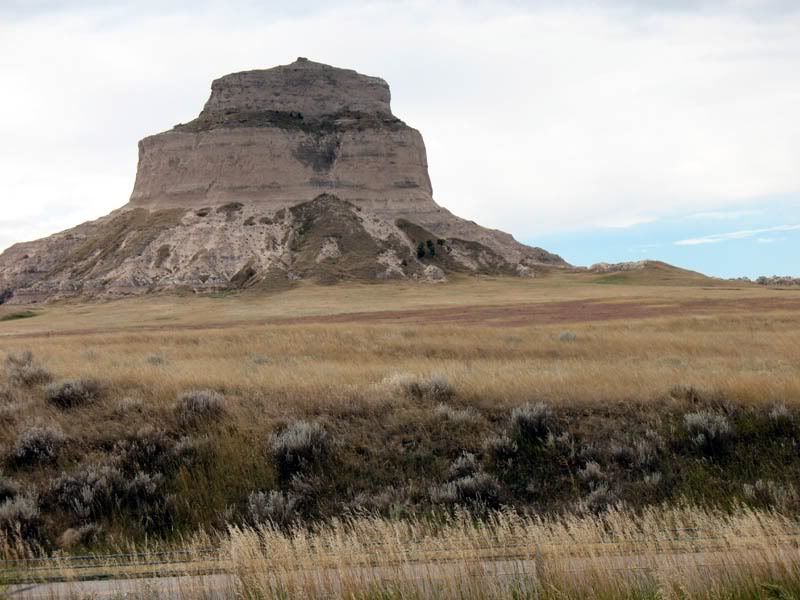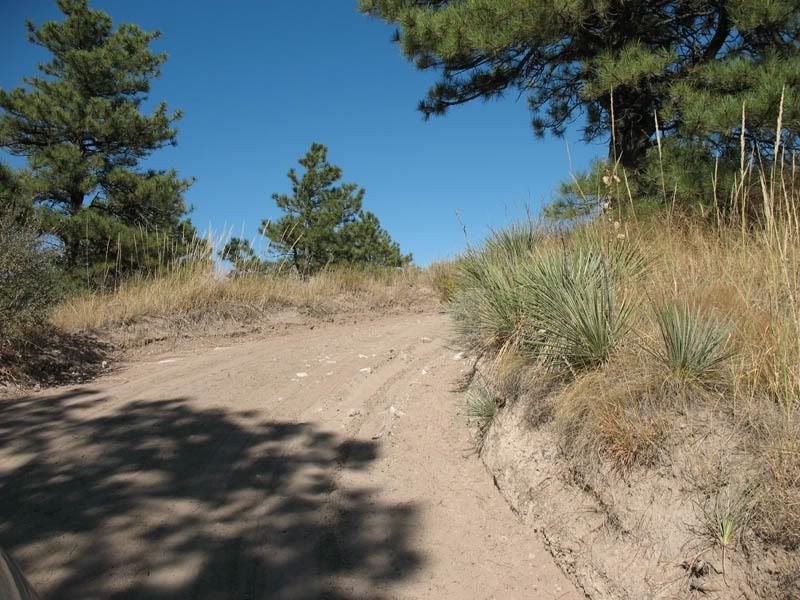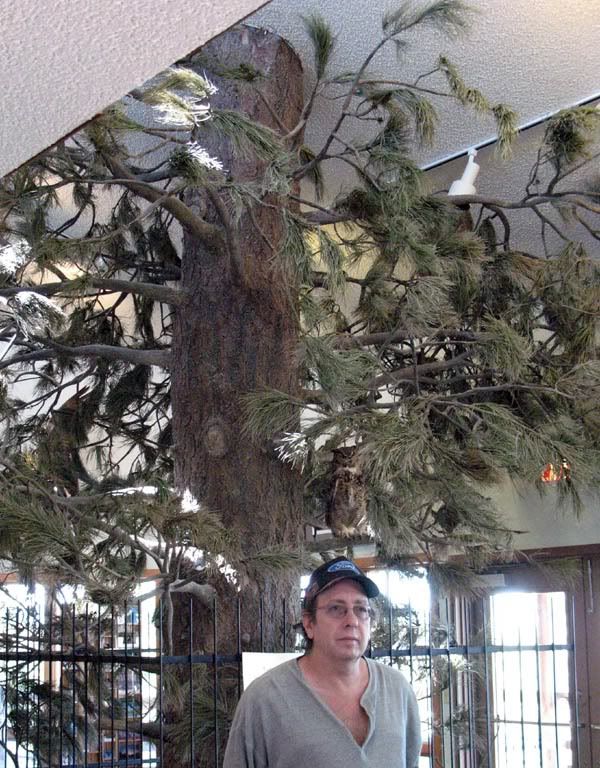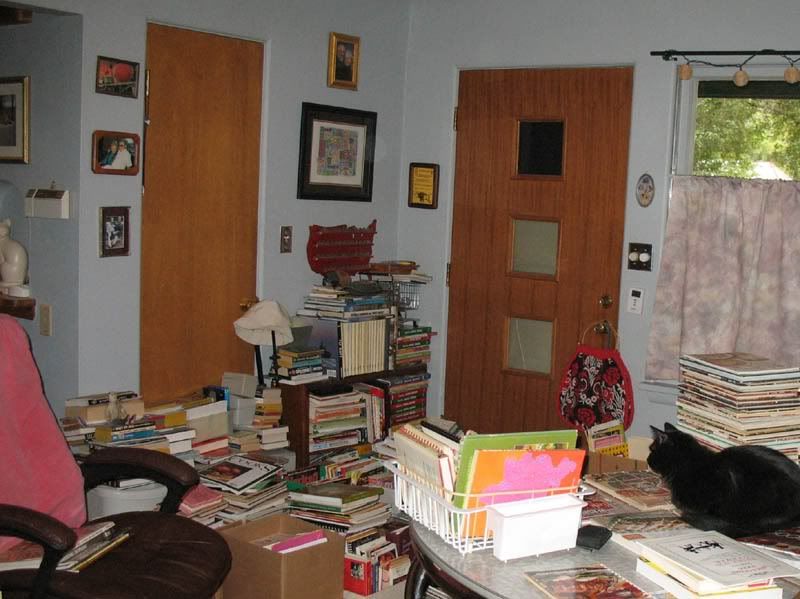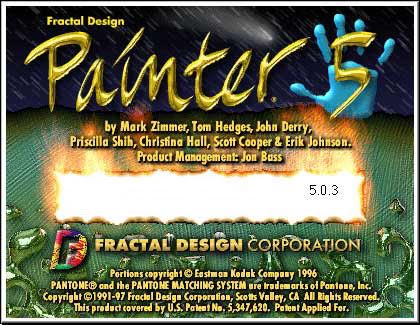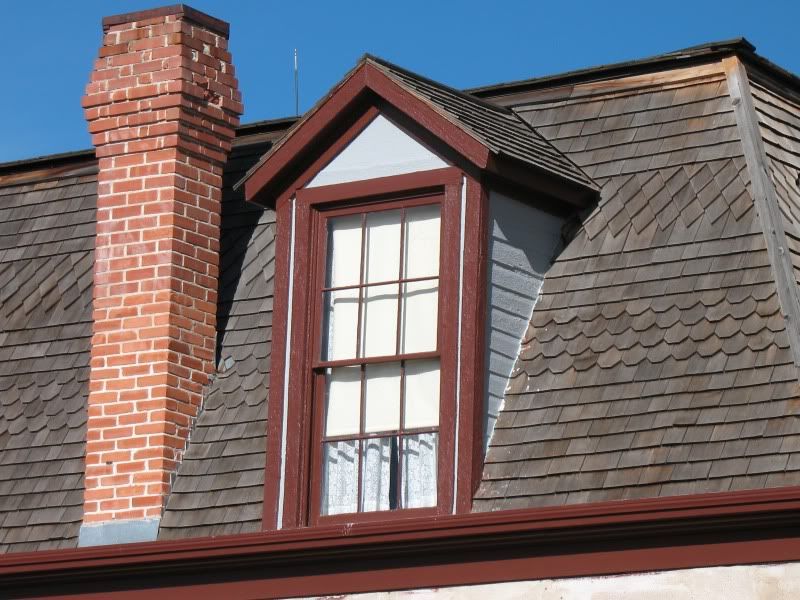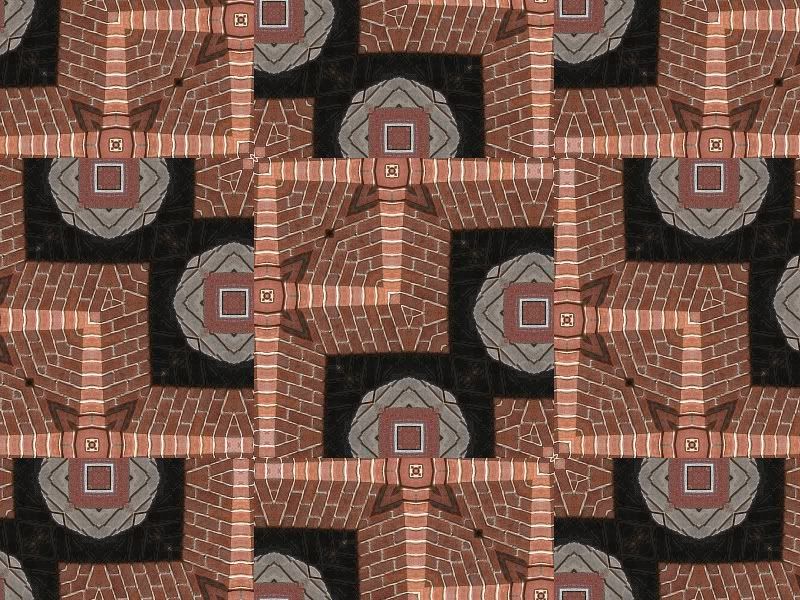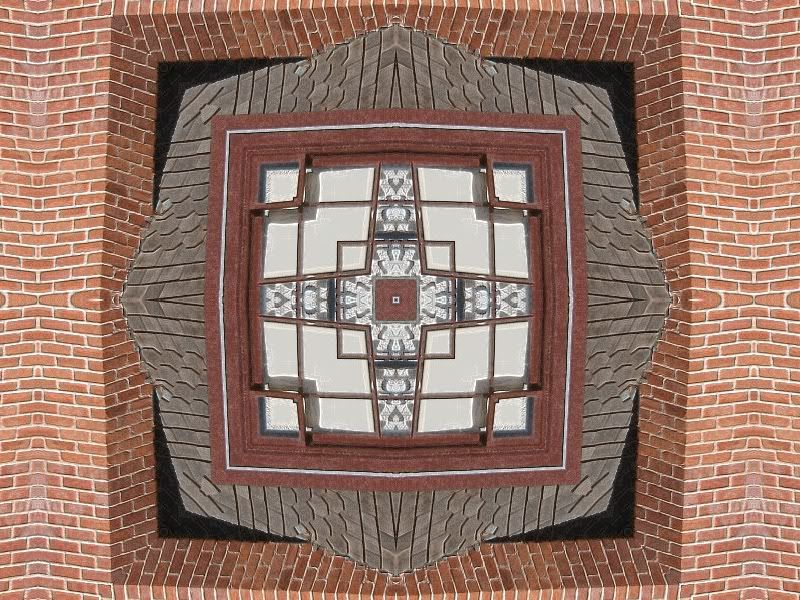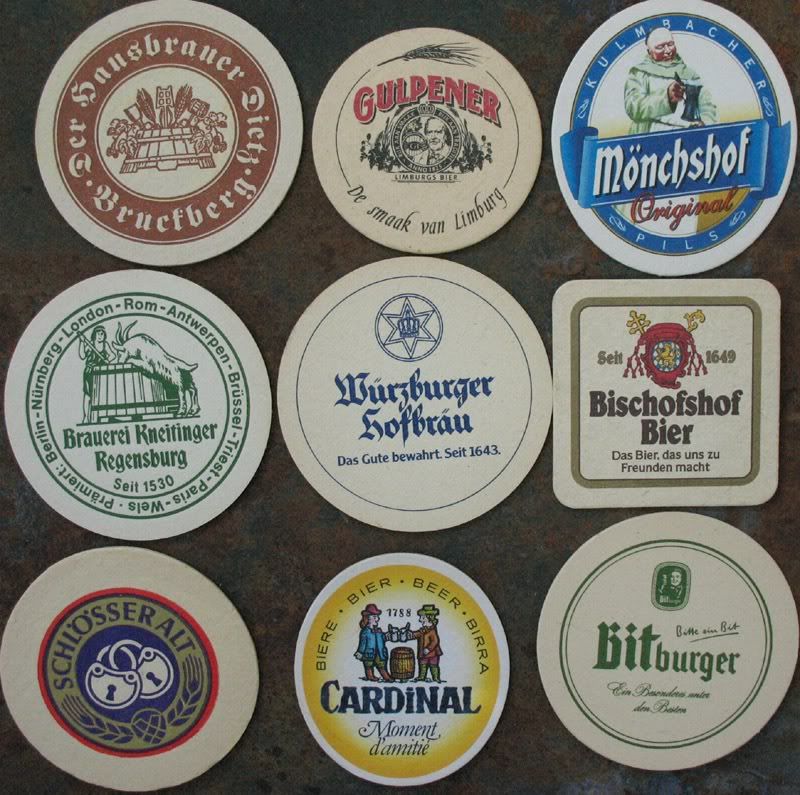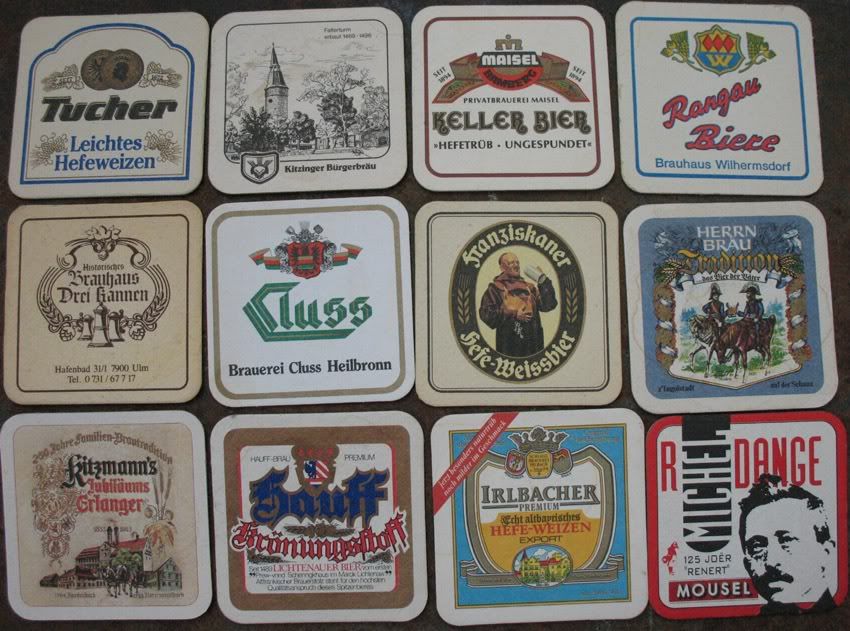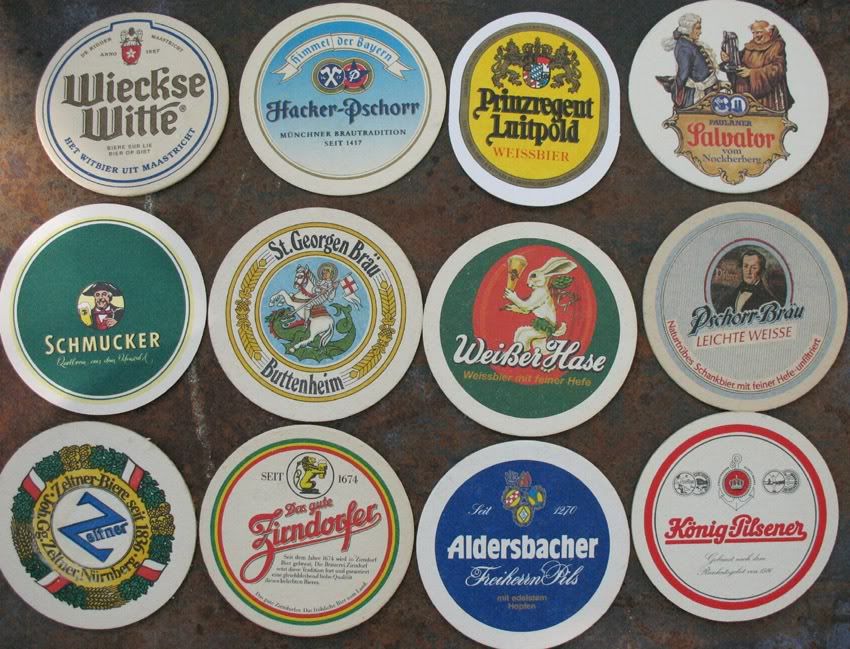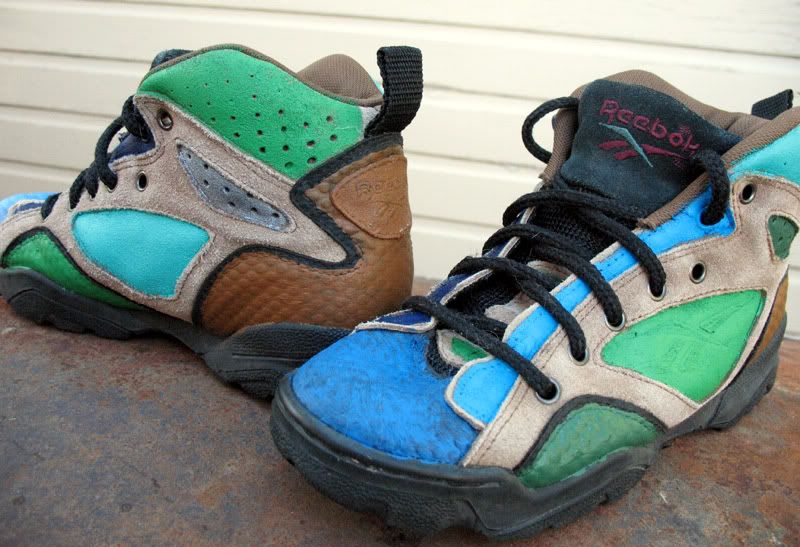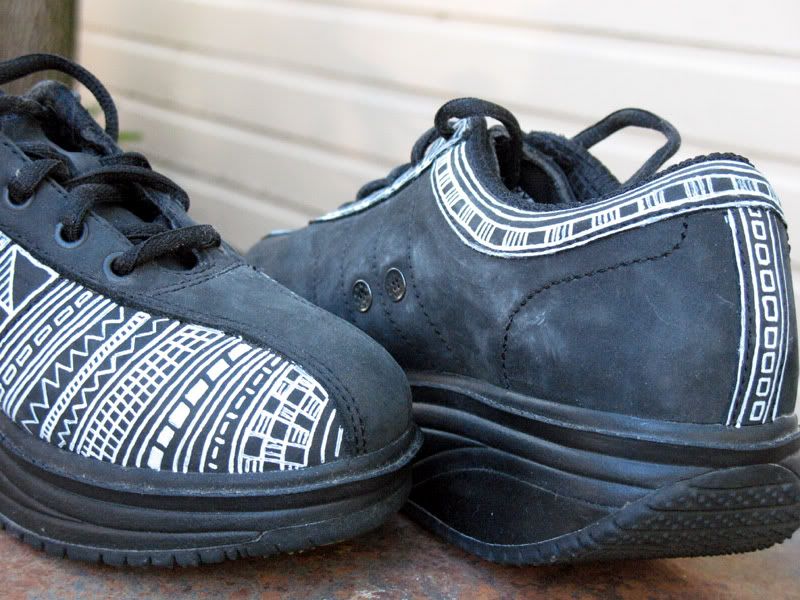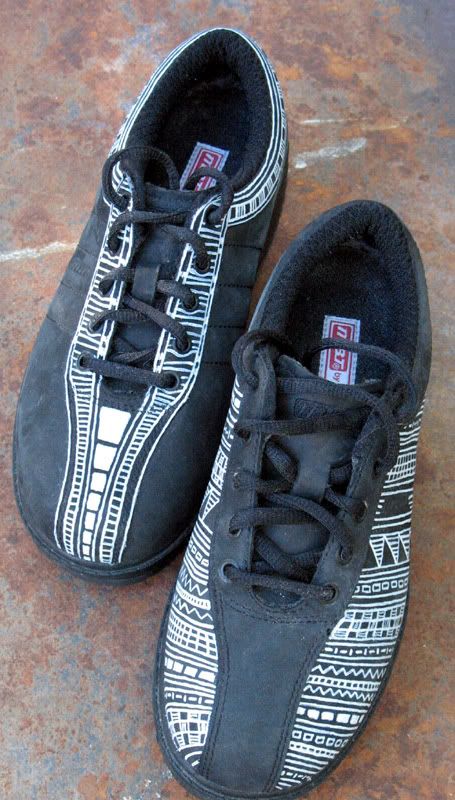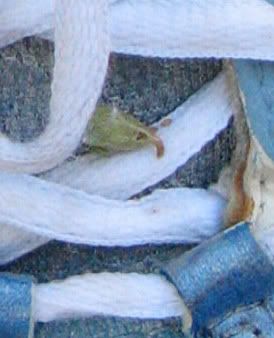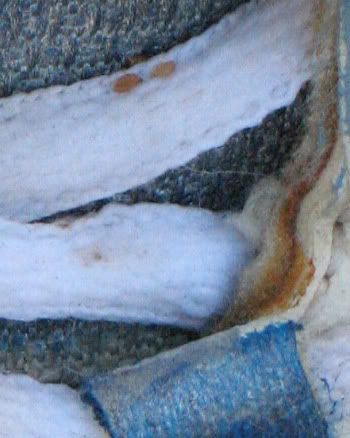15 years ago today, on Sept 5th 1995, our house was moved about a mile and a half, to its present location.
The house, originally built in 1957 on a lot on the eastern shore of Lake Loveland (with its view of sunsets over the Rockies and boating rights on the lake), was deemed not modern enough by its owner, who decided to build a much grander palace on the site. A local house mover put together a deal at the last minute to salvage and move the house if he could find a buyer with a suitable lot.
We wound up being that buyer, we had the lot, and as far as the house went, it was love at first sight for both of us. The lot, located in the downtown area, happens to have an alley running along one side and behind it, which is perfect for maneuvering a house into place, something we certainly hadn't considered when we bought the property. And the route seemed doable. At that time, there was an old house in rough shape on the lot which was slated for demolition once we had a replacement lined up. And no trees, another real plus in the logistics of moving a house onto a relatively small lot.
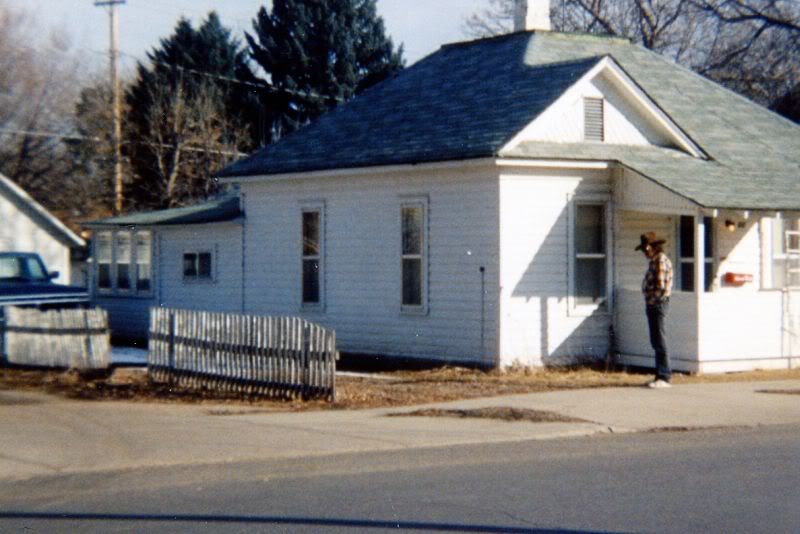
the "old house". It looked ok from the outside, the inside was a mess
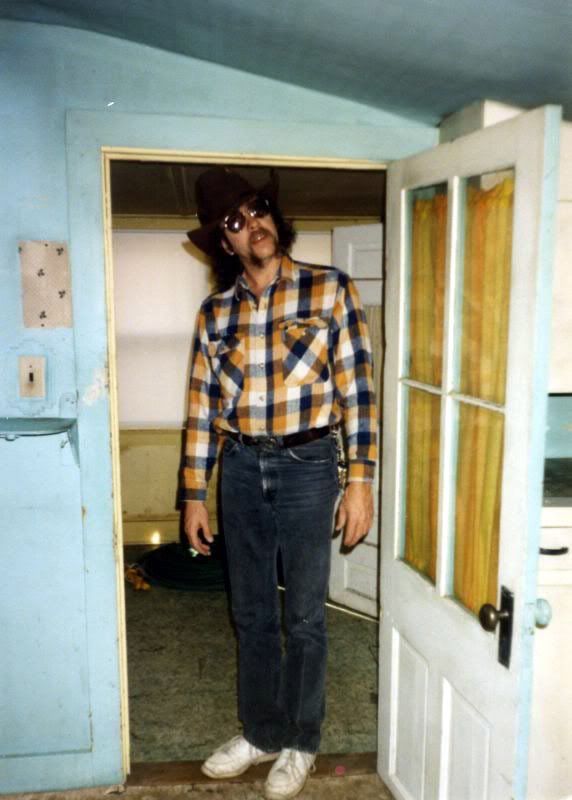
doorway in the old house (it was unoccupied during the time we owned it)
The new house was perfect, that was really the only word for it. 2 BR 2 BA ranch style, encased in 3/4" diagonal sheathing covered with painted cedar siding. Oak hardwood floors throughout, plasterboard walls with a coved ceiling in the open living/dining room, beautiful '50s style tiling in both bathrooms, and a magnificent floor-to-ceiling flagstone fireplace in one corner of the living room. We learned it had been designed and built as a retirement home by an engineer who paid a lot of attention to details and favored lots of closets. Amazingly enough, the original drawings were still with the house when we bought it, which turned out to be fortunate for us, as we were able to resubmit them to the city when applying for permits for the move and subsequent construction to build the house in. Generating new drawings would undoubtedly have been expensive.
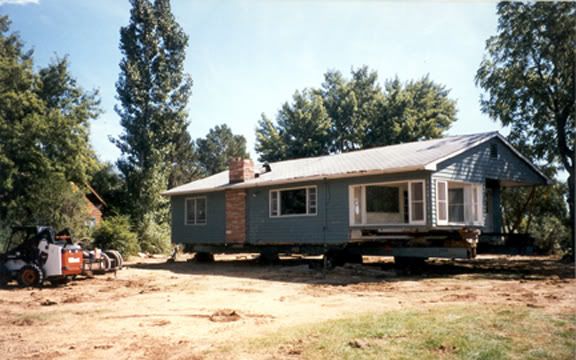
the new house on its old lot, waiting to be moved up to the road
Although we saw "perfect" in the new house, what we were really looking at was "potential." On its original lot, our new house was actually the upper level of a two-story walkout, the lower level built into a hill. So we were only moving half of the original house, which had to be separated from its foundation (front) and lower level (back) before being raised into place on giant beams for moving. The house had an attached single car garage which gave the building an "L" configuration that was way too wide, so that needed to be cut off. All this cutting and separating meant the house would need extensive reworking or replacement of things like plumbing pipes and electrical lines. In order to satisfy zoning/code requirements, we had to replace the furnaces (the house had two, original to the house, one was a smaller version installed as a back-up which looked unused) with a more energy-efficient model. And the house, which had been a rental for about a decade, was pretty run down and needed things like paint inside and out, floors sanded and refinished, new roof as well as many, many smaller repairs and retouches. The condition was understandable, the plan had been to demolish the house, so it was reasonable to let it run down. And as well built as the house was, its condition at selling helped keep the price down, which meant we could afford it. Sweat equity was our most logical path to of home ownership.
Amazingly enough, we contracted for the move quickly (with financial involvement from my parents), which was essential because we had only a month until the house had to be moved. There was a lot of paperwork involved, meetings with city engineers and planners, engineering plans for the foundation were needed....a lot of time consuming and stressful work. Joe was working full time, so I handled most of that. We also had to arrange to have the old house knocked down and hauled to the landfill, and the lot excavated into a giant pit to accommodate moving in the house and then pouring concrete foundation walls under it. There was an old washhouse on the property that a friend wanted, so we had that moved out. Meanwhile, we wanted to spend as much time as we could watching the house movers work on readying the new house for its move, which was fascinating. We had salvage rights to everything left behind, which included all kinds of replacements for doors, hardware, lumber, flagstone, siding, etc, useful as replacements in the part of the house we were moving. We also wanted to remove as much of the ceiling (plaster board) from the ceiling of the lower level as possible, as access to the studs under the house would be necessary for plumbing and electrical work, and the best place to leave all that mess and dust was at the original site. I remember that August as a blur, long, very hot days and cool nights, never enough time to get everything done and very little sleep.
Our house mover was a very capable and personable man who had learned the business from his father and was assisted by his two twenty-something sons. What hard, physical work house moving is!! They cut most of the house itself apart using chain saws, although they used reciprocal, circular, and other such saws when necessary as well. They chopped huge holes in two sides of the lower level to accommodate the two giant beams that would support the house until it was lowered onto its new foundation. Once these were in place, running the length of the house, they added several smaller beams, primarily to support the weight of the stone fireplace and chimney, which was about mid-building. Then several (amazingly small, in my opinion) hydraulic jacks were placed at strategic points under the beams, and our new house slowly, ever so slowly, began its journey into its new incarnation. The first sight of daylight under the house as it was lifted an inch or so from it foundation is one I will never forget. The inches became feet, the jacks were repositioned one by one onto massive chunks of wood, and eventually the house was high enough to have the axles rolled underneath and into position for the move. At that point, the house felt vulnerable to us, so we spent the last several nights before the move in sleeping bags on the floor, so exhausted at that point that we could sleep anywhere.
The plan was to move the house very early on the morning of the 5th, which was the Tues after Labor Day that year. No parking signs had been placed along the route, and all kinds of measuring and figuring done in advance by both the house mover and the city. Early on Labor Day the house mover hooked his truck up to the house and pulled it up to the road, and everything was finally ready.
The house was scheduled to depart at 1 AM, and there was plenty of prep activity underway by midnight. The house needed pilot trucks front and back, and city utility trucks that were responsible for lifting lines and traffic signals as the house passed underneath. I seem to remember cop cars showing up for brief check-ins before and during the trip, adding red and blue to all the flashing amber of the pilot and utility trucks.
The house mover fired up his truck, slid it into gear and pulled the house off of its old lot and onto Garfield Ave. And that was as far as we were got! The truck had broken an axle at some point in the process of getting the house onto the street (completely blocking it), and wasn't going any further. Frantic phone calls (those were the days of the old analog "bag" phones which relatively few people had) located a replacement truck and driver, and by 3 AM we were once again under way.
Most of the trip went pretty smoothly, notably the long run down Garfield Ave. There was a car parked (had actually run over the temporary No Parking sign and it was wedged under the car) blocking passage at one point, so one of the house movers knocked on the door of the nearby house and told the man who answered to move the car now or it would be towed. The man looked up and saw the house looming over his car and raced out to move it as fast as he could. Don't believe he ever saw the No Parking sign.
The difficult part of the move came after the house turned off Garfield and onto the smaller neighborhood streets. We had some real problems at one corner, the trees just weren't going to allow passage. By this time it was about 5 AM, and most houses were still full of sleeping people. Everyone involved in the move put their heads together to come up with a solution that would get us past the impeding branches. A couple of the trees were young and still pretty pliable, they were pulled out of the way with ratcheting straps. The activity had awakened nearby residents, and a couple of the homeowners were upset and issuing ultimatums about none of their branches to be cut, etc etc. to anyone who would listen. The trees were all planted in the hell strips and are controlled by the city, but that was irrelevant at that point. The house had to proceed, there was no going back... Eventually the decision was made to trim some high overhanging branches from two trees and also trim back part of the roof where the garage had been cut away. Chain saws accomplished both tasks quickly, but of course chain saws roaring to life at 5:15 AM also brought people pouring out of their houses in robes and slippers, clutching coffee cups. It was quite a "Welcome to the Neighborhood."
Eventually we got around that corner, and the next, and then the final corner, a turn which required more shaving of branches, luckily in this case the homeowner didn't mind at all. Finally, about 7AM, the house was pulled into the massive pit dug to accommodate it, maneuvered into position, and the truck that had hauled it was able to unhook and drive away. That too was a very special moment that I will likely remember forever.
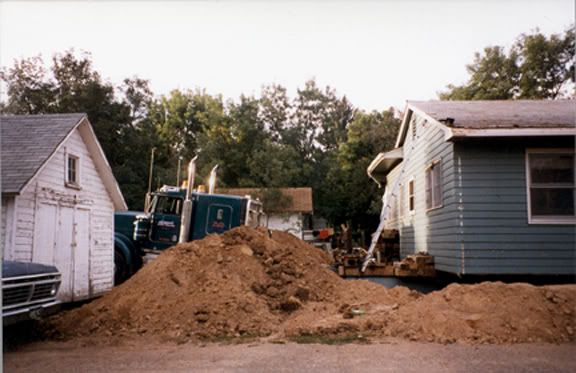
positioning the house before the truck unhooks
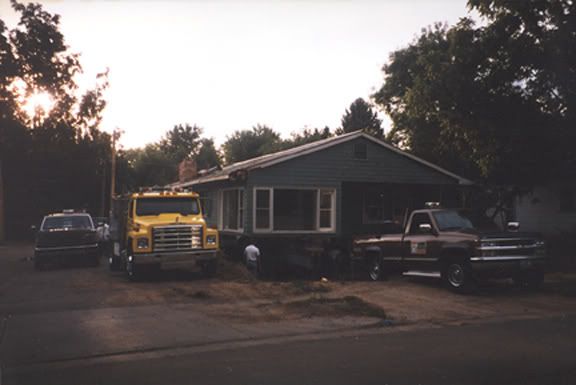
the house in position, street view
Joe and I stuck around that morning until everyone had left, which took a couple of hours. We met and talked to many of our neighbors, naturally there was a lot of curiosity about our project. We really needed to get a construction fence up at that point, but we were just too beat to attempt it. We went home and took a long nap, and the fence went up that evening. It all worked out.
Not surprisingly, the move was just the beginning of the adventure. We spent the following 22 months working on the house in every spare minute we had available. We hired out the concrete work of the foundation, which includes a fully floored 4 foot crawl space, but added the wooden base plates and kneewalls ourselves. Joe and his dad built a floor for the sunroom; he rebuilt and resided the wall and roof where the garage had been, and installed posts to support porch roofs. We had a man with a backhoe and a dump truck bring in the dirt necessary to fill in our pit around the foundation. We hired a roofing contractor to tear off and then put on new shingles. We increased the electrical service and rewired the entire house pulling wires through the walls with fishtape. Joe replaced all of the supply side plumbing pipes and rebuilt what remained of the sewage pipes. We had an HVAC company install a new furnace and new duct work, and hired a stone mason to rebuild the chimney inside (down to the crawl space using concrete blocks) and outside (to the ground /foundation, using salvaged flagstone). I sanded, scraped and painted the place inside and out (took several years to do) and we both spent an incredible amount of time reconditioning the oak floors, sanding and then carefully applying 5 coats of polyurethane. I remember we were both frustrated at the time by the seemingly slow pace of progress, now I look back and marvel at all we managed to get done, all while working other jobs of course.
15 years after the epic move, I am very glad that it happened. That we made it happen. With much help from our family and friends, we certainly could not have pulled off the project without their help and support. Also, a competent and reasonable house mover, along with the competent contractors we hired, those folks all made their part of the project successful. There were a couple of instances where the contractors' work did not fulfill expectations, but for the most part the jobs were done well. And today we are living in a fabulous house to which we feel strongly bonded. We have much history with this house! A green solution and a much, much nicer house than we could have otherwise afforded.
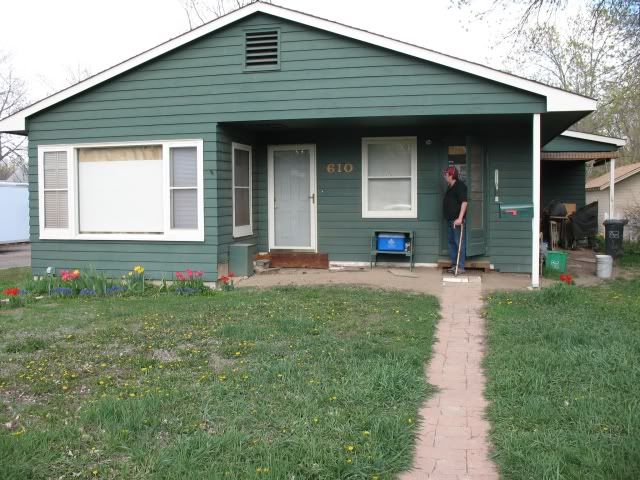
the house, pretty much as it looks today (picture taken May 2008)

